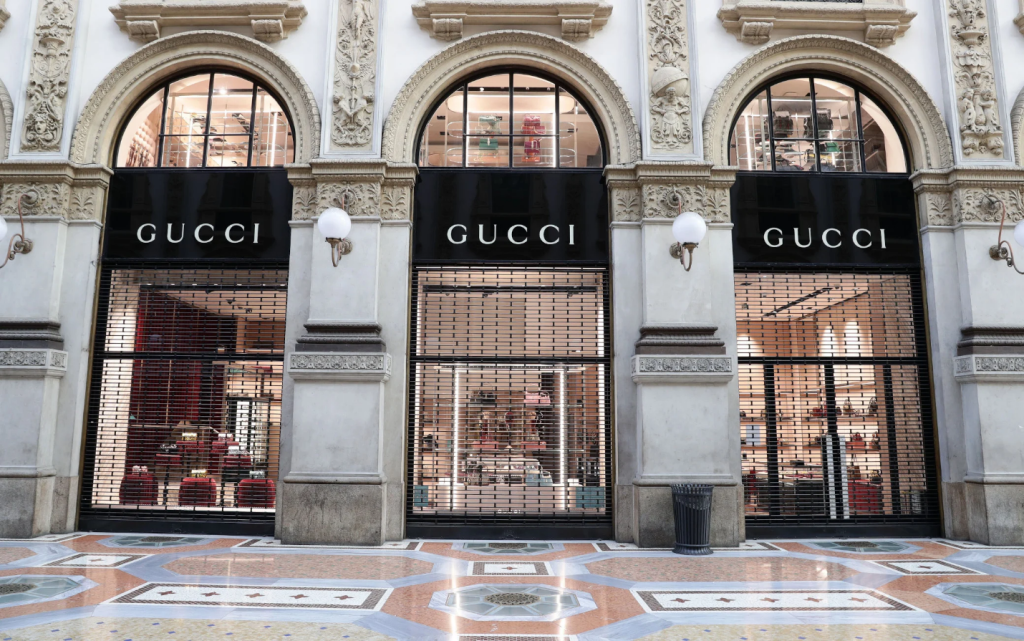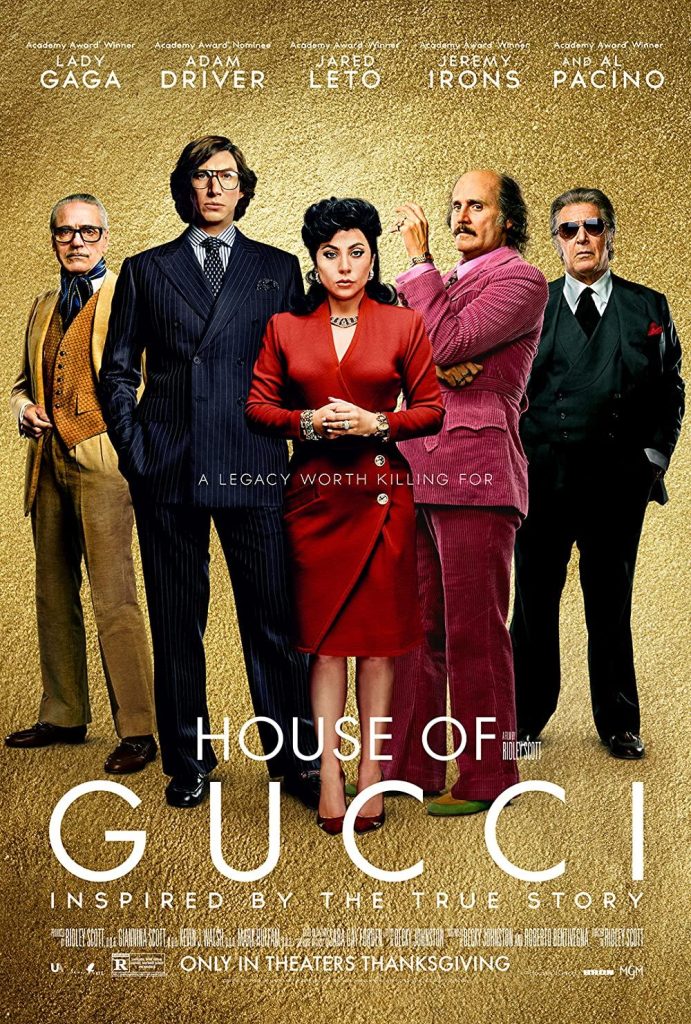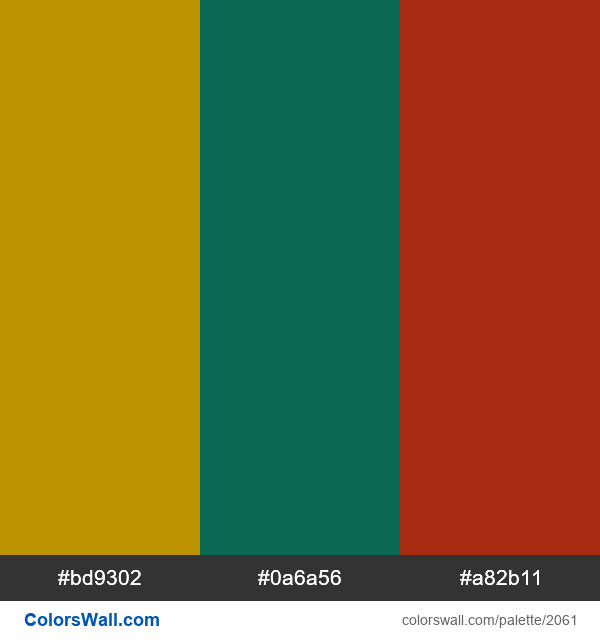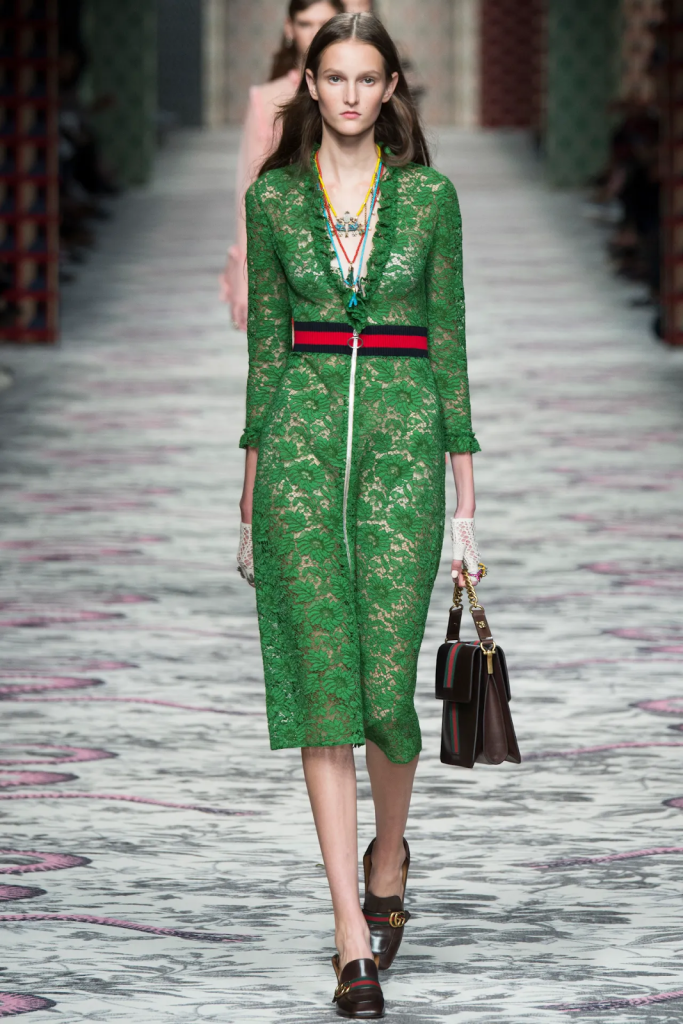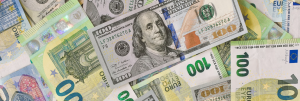Fashion and Gucci are synonymous. The epitome of high fashion, Gucci, not only graces the runway fashion week after fashion week across the globe, but it’s also a staple of pop culture (with Gucci even having a film made about the brand). Don’t worry though, if you didn’t get the chance to watch House of Gucci, you’ll feel like you did catch the film by the end of this blog post.
If you did catch the film, or you are familiar with luxury fashion, you may already know about the Gucci brand – but there’s always more to learn. If you aren’t as familiar with fashion, or if you know of the brand, but not the background of Gucci, then you came to the right place.
Throughout the rest of this blog, we’ll highlight everything you didn’t know you wanted to know about the Gucci brand and how its iconic logo came to be.
Meet Gucci
Gucci is a staple in the luxury fashion industry. Established in Italy, Gucci is a renowned fashion brand raising the bar for clothing, shoe, and accessory items for women, men, and children.
Beyond these items, Gucci is also a force to be reckoned with in the cosmetic and fragrance industries. Whether or not you already knew that what you may be thinking now though, is “how did Gucci come to be?”
Gucci was founded in 1921 in Florence, Italy by Guccio Gucci. Guccio was born in 1881 and was born into a family of craftsmen so starting his own craft business was familiar to him. Gucci’s workshop was given the name “House of Gucci,” which is a name still associated with the brand today and the title of a recent blockbuster film about the Gucci family.
The brand was founded as the same brand we know and love today – an indulgent, high-end, luxurious brand. Today, the brand falls under Kering, the French conglomerate, but Gucci has continued to maintain its status as the most successful Italian brand in the world.
Over 100 years since the brand was founded, Gucci shows no sign of giving up this title or slowing down.
Gucci’s Evolution
Gucci’s story of evolution is quite simple – it’s a story of a family that took a liking to fine leather items and that liking flourished into a fashion powerhouse. Because its story is quite simple, it doesn’t require an in-depth account of how the brand came to be. Below we highlight the key points and takeaways from Gucci’s evolution.
1921: Gucci is founded
Founder Guccio Gucci worked as a hotel employee at Hotel Savoy, as a porter, bellhop, and elevator operator, before starting his revolutionary fashion label. While working in Paris and London, he took notice of the high-quality leather luggage guests traveled with.
This led Guccio to travel to Florence, in the heart of Italy’s leather district, and led him to open a small leather, fine goods shop. The items he sold were horse harnesses, riding boots, and suitcases – different than Gucci’s products today. Every item that was sold had intricate detail.
After Guccio’s store was successful, his three sons helped him open additional stores in both Milan and Rome.
1950s: Gucci becomes a premier luxury brand
What started as a small leather goods shop grew into a premier fashion label in the 1950s. Gucci gained global exposure when the entertainment industry took a liking to the brand. Countless celebrities were spotted wearing the brand and posing in Gucci fashion items.
Guccio remained the chief designer of his brand up until 1953, until his death. Once Guccio passed, his son Aldo took over the management of the company. With Aldo’s leadership, he implemented two strategic visions.
The first was to update the original Gucci logo, and the second was to print the “double G” logo on everything from scarves, belts, handbags, suitcases, accessories, and more.
Today: Gucci is the leading Italian brand in the world
Once Gucci established itself as a premier brand, there was no turning back.
Gucci is still the leading Italian brand in the world today and is the epitome of high-end, world-class fashion.
Beyond leading in the space, Gucci continues to have a presence across the entertainment industry, the family being the subject of the 2021 film, House of Gucci.
Roadblocks Along the Way
When something is highly sought after, a common price a brand needs to pay is dealing with counterfeit products. When a company’s products are so desirable, some people see this as an opportunity to create knock-off versions of that product to either offer a similar item to consumers at a lower price or to try to fool consumers entirely.
While many customers can see through these counterfeit items, sometimes that isn’t always the case, and these sellers are successful. While this isn’t a roadblock that caused severe damage, it is one that Gucci, like many other luxury brands, had to navigate.
A second roadblock, applicable to Gucci and its logo, is when the brand almost lost the rights to its logo. While the company’s headquarters was based in Italy, the brand had a trademark in the United Kingdom. It wasn’t clear what the property laws were to Gucci and after the trademark ended in 2012, the brand did not submit a request to renew the logo in time.
This oversight allowed other brands to try to legally claim or replicate Gucci’s logo. Gucci lost its UK trademark since the brand was unable to legally claim the logo as the brand’s own in court, but due to its public recognition, this oversight wasn’t a detrimental one.
The Meaning of Gucci’s Logo and Gucci’s Logo History
Before diving into Gucci’s logo evolution, it’s important to first look at how the logo was conceptualized. While the name Gucci is the last name of the founder, Gucci has evolved to mean excellence, fashion, luxury, and greatness. We dive into the font, color, and symbol choices in a little bit but every decision with this logo design was intentional. The logo is often displayed in a gold color to convey the luxuriousness and elegance of the brand, and the symbol is deliberate to ensure that it clearly articulates what the brand was built on.
What you’ll notice below as you look at the logo’s evolution is that the first logo wasn’t until 1933, more than 10 years after the brand was founded. Guccio’s son, Aldo, joined the business’s operations and decided to create a logo for his family’s brand. He decided to use his father’s initials as the inspiration for the logo, which we look at below.
1933-1955: The first version of the Gucci logo
As noted above, Guccio’s son, Aldo, created the first iteration of Gucci’s logo as a tribute to his father. This logo design was simple, including two capital G letters that were intertwined.
While this knight image was the official Gucci logo, the brand still utilized the “double G” logo on its merchandise and items, making this symbol just as synonymous with the brand as the knight logo was.
1955 – 1992: The second version of the Gucci logo
After Guccio passed away and Aldo took over the leadership of the Gucci brand, Aldo decided to make a strategic choice to update the brand’s logo.
This new logo still paid tribute to his father including a knight holding suitcases just like his father did when he worked as a bellhop. This logo version conveyed that the brand is more than what Guccio first started it as, it’s a brand that is much greater than a young bellhop could have dreamed up.

1992: The third version of the Gucci logo
After the “double G” logo was used across Gucci’s lines and products, the brand decided to make this the official logo of the brand again in 1992. This logo transition was aligned with Tom Ford’s arrival to the brand. Tom incorporated slight changes to the lettering and characters of the logo. In 2015, the logo was slightly updated again. This time the logo was printed in white, making the logo look clean, innovative, and corporate.

Today: The fourth (and current) version of the Gucci logo
You’ve likely gathered that Gucci’s logo hasn’t altered much since it was first created. Gucci’s logo today resembles the original logo with its font choice, lines, and color selection. Gucci’s logo is one that never required drastic updates through the years.
Gucci’s font choice:
The focal point of Gucci’s logo is its font. Adorned on a variety of the brand’s luxury clothing and accessory items from shirts to scarfs, to belts, to handbags, the Gucci logo lettering is iconic. The Gucci typeface is a unique font created exclusively for the brand.
The font features elegant lines that help to convey confidence. Written in capital letters, the font is like Golden Book Bold, Granjon Roman, Questal SC Medium, and Mynaruse Flare Medium.
Ultimately this font is a bold modern sans-serif that is whimsical, yet elegant and sophisticated and is a timeless font.
Gucci’s logo color:
While the Gucci logo can mimic the color of whatever fashion item it is printed on, the official Gucci logo is displayed in a monochromatic color palette, often displayed in black and white, or gold. Another common color combination you’ll see often on accessories with this logo is green and red. The “G” symbols are linked together to create a pattern of these two colors. These colors are an intentional choice for the brand because it conveys wealth, growth, success, and passion, helping to showcase how luxurious the brand is.
Gucci’s logo symbols:
Gucci’s logo is a symbol on its own. The symbol is the essence of the brand and is the double G. The double G’s pay tribute to the founder, Guccio Gucci, and was created by the founder’s son, Aldo. These double G’s are linked together in the modern sans-serif font we referenced above.
This symbol is an important part of the brand because it is a fundamental part of the brand’s product line. This logo has become a staple with the brand’s fashion items and is so recognizable that if someone sees the Gucci double G’s, people automatically know it belongs to this luxury brand.
Gucci Today
While Gucci was founded in 1921, Gucci has maintained its status as a leader in the luxury fashion space ever since.
If you looked at Gucci today, you would find a company with an annual revenue of $4.3 billion. Beyond that, Gucci has maintained its headquarters in Italy and is the best-selling Italian brand across the globe.
The draw of Gucci is undeniable. As noted earlier in this article, Gucci items are so coveted that there are many counterfeit Gucci items people try to pawn off as original.
Lessons Learned from Gucci
When you look at Gucci as a brand, there are lessons we all can learn. Gucci is a global conglomerate whose logo is recognized all over the world.
That leaves us asking ourselves, “how can we create a logo that will grow to be as popular as Gucci’s?” Gucci’s logo is on billboards, on the movie screen, and worn on the streets – it’s everywhere. That means there are lessons we can all learn from the brand.
The first lesson is simplicity. Gucci’s logo doesn’t try to incorporate a million design elements. It’s simple in detail so the brand’s name doesn’t get lost in the design elements.
Second, the font and stylistic elements that are used are intentional. Everything from the typeface to the lines to the colors conveys elegance, sophistication, and classiness which directly ties into the brand.
Finally, the logo is timeless. Instead of trying a bunch of different logo designs, Gucci stayed true to what their customers would recognize, the iconic lettering. Once this was established, Gucci resisted the urge to change its logo drastically.
Designing your business’s logo can feel like one of the most important decisions you can make – trust us, we get it. First impressions are everything and first impressions are what customers will associate your brand with, so it’s important to design a logo that you will not only love today, but that you will love 5, 10, or 20 years down the road.

